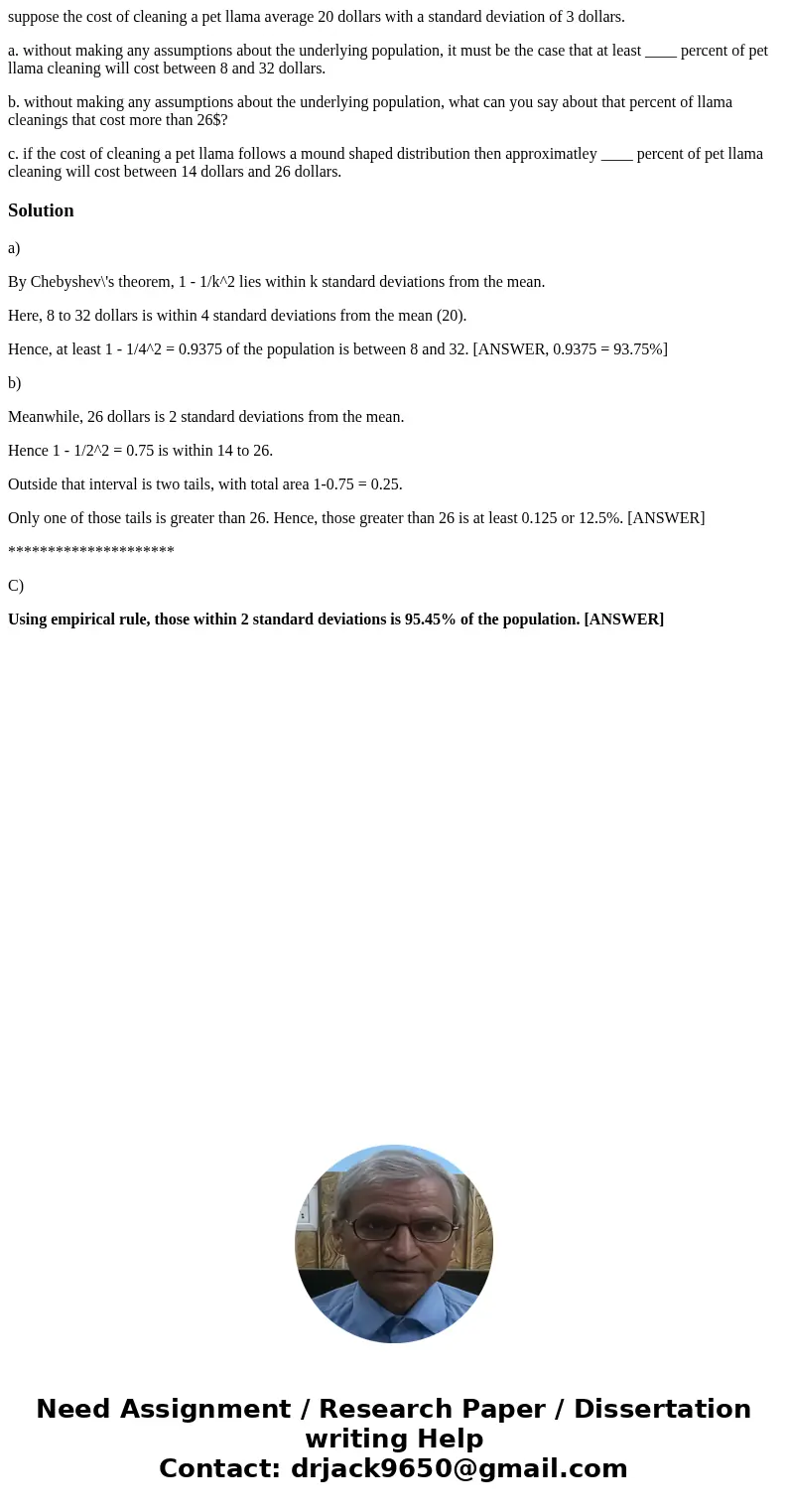suppose the cost of cleaning a pet llama average 20 dollars
suppose the cost of cleaning a pet llama average 20 dollars with a standard deviation of 3 dollars.
a. without making any assumptions about the underlying population, it must be the case that at least ____ percent of pet llama cleaning will cost between 8 and 32 dollars.
b. without making any assumptions about the underlying population, what can you say about that percent of llama cleanings that cost more than 26$?
c. if the cost of cleaning a pet llama follows a mound shaped distribution then approximatley ____ percent of pet llama cleaning will cost between 14 dollars and 26 dollars.
Solution
a)
By Chebyshev\'s theorem, 1 - 1/k^2 lies within k standard deviations from the mean.
Here, 8 to 32 dollars is within 4 standard deviations from the mean (20).
Hence, at least 1 - 1/4^2 = 0.9375 of the population is between 8 and 32. [ANSWER, 0.9375 = 93.75%]
b)
Meanwhile, 26 dollars is 2 standard deviations from the mean.
Hence 1 - 1/2^2 = 0.75 is within 14 to 26.
Outside that interval is two tails, with total area 1-0.75 = 0.25.
Only one of those tails is greater than 26. Hence, those greater than 26 is at least 0.125 or 12.5%. [ANSWER]
*********************
C)
Using empirical rule, those within 2 standard deviations is 95.45% of the population. [ANSWER]

 Homework Sourse
Homework Sourse